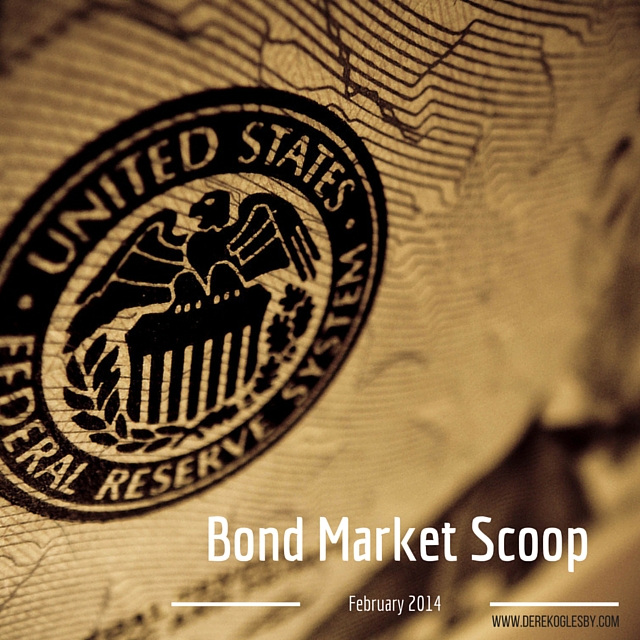
The Fed
The Federal Reserve (Fed) continued with its stance to gradually reduce their quantitative stimulus program last month. The Fed will cut its monthly bond buying by another $10 billion to $65 billion and will most likely conclude QE by the end of 2014. “However, asset purchases are not on a preset course, and the Committee’s decisions about their pace will remain contingent on the Committee’s outlook for the labor market and inflation,” stated the Fed.
Yield Curve
The U.S. Treasury yield curve flattened last month on sluggish economic data. The yield spread between the 3mo-Tbill and 5-year Tsy fell by 0.21%.while the 2-year and 5-year spread declined by 0.20%. Outside of any drastic change in unemployment and/or inflation expectations, tapering should continue at a steady pace of $10 billion per meeting. This pace would end QE by the end of this year.
Interesting Observation
Manufacturing Surprise – Blamed by the colder-than-usual winter weather, factories expanded slower than estimated last month, bringing a halt to recent momentum in U.S. manufacturing. (Readings above 50 indicate growth)
Monthly Wrap-up
Janet Yellen is officially the new Federal Reserve Chairman; but she is unlikely to deviate much from the stance of the outgoing Fed chair and FOMC, which is that of gradual withdrawal of accommodation. Since she has not been an active participant of the speaking circuit like other Fed officials, in the weeks and months to come, the market will analyze her every nuance to identify if she is as dovish as they expect her to be, given the current tapering mandate.
Despite the latest sluggishness of various areas of the economy, it is difficult to make much of the recent data due to the possibility of weather playing an active role in the analysis. This January was the coldest in the US since 1988 and according to researchers, the correlation between 1Q GDP growth and average 1Q temperatures has been 48% over the past decade. Therefore, weather may have been responsible for some of the weakness in data recently. Manufacturing expanded at the slowest rate in eight months, housing starts fell considerably over last month and the payroll report came in weaker relative to consensus -though there were some positive signs.
